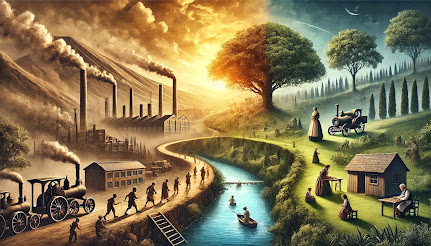READING PASSAGE 1
You should spend about 20 minutes on Questions 1-13, which are based on Reading Passage 1
on pages 2 and 3.
Huge earth and rock mounds rise out of the desert of the Supe Valley near the coast of Peru in
South America. These immense mounds appear simply to be part of the geographical landscape
in this arid region squeezed between the Pacific Ocean and the Andes mountains. But looks
deceive. These are actually human-made pyramids. Strong evidence indicates they are the
remains of a city known as Caral that flourished nearly 5,000 years ago. If true, it would be the
oldest known urban center in the Americas and among the most ancient in the world.
Research undertaken by Peruvian archaeologist Ruth Shady suggests that the 150-acre complex
of pyramids, plazas and residential buildings was a thriving metropolis when Egypt's great
pyramids were still being built. Though discovered in 1905, for years Caral attracted little
attention, largely because archaeologists believed the structures were fairly recent. But the
monumental scale of the pyramids had long interested Shady, who began excavations at the
site in 1996, about 22 kilometers from the coast and 190 kilometers north of Peru's capital city
of Lima.
Shady and her crew searched for broken remains of the puts and containers that most such
sites contain. Not finding any only made her more excited; it meant Caral could be what
archaeologists term pre-ceramic, that is, existing before the advent in the area of pot-firing
techniques. Shady's team undertook the task of excavating Piramide Mayor, the largest of the
pyramids. After carefully clearing away many hundreds of years' worth of rubble and sand, they
identified staircases, walls covered with remnants of colored plaster, and brickwork. In the
foundations, they found the remains of grass-like reeds woven into bags. The original workers,
she surmised, must have filled these bags with stones from a nearby quarry and laid them atop
one another inside retaining walls, gradually giving rise to the pyramid's immense structure.
Shady had samples of the reeds subjected to radiocarbon dating and found that the reeds were
4,600 years old. This evidence indicated that Caral was, in fact, more than 1,000 years older
than what had previously been thought to be the oldest urban center in the Americas.
What amazed archaeologists was not just the age, but the complexity and scope of Caral.
Piramide Mayor alone covers an area nearly the size of four football fields and is 18 meters tall.
A nine-meter-wide staircase rises from a circular plaza at the foot of the pyramid, passing over
three terraced levels until it reaches the top. Thousands of manual laborers would have been
needed to build such a project, not counting the many architects, craftsmen, and managers.
Shady's team found the remains of a large amphitheater, containing almost 70 musical
instruments made of bird and deer bones. Clearly, music played an important role in Caral's
society. Around the perimeter of Caral are a series of smaller mounds and various buildings.
These indicate a hierarchy of living arrangements: large, well-kept rooms atop pyramids for the
elite, ground-level quarters for craftsmen, and shabbier outlying dwellings for workers.
But why had Caral been built in the first place? Her excavations convinced Shady that Caral
once served as a trade center for the region, which extends from the rainforests of the Amazon
to the high forests of the Andes. Shady found evidence of a rich trading environment, including
seeds of the cocoa bush and necklaces of shells, neither of which was native to the immediate
Caral area. This environment gave rise to people who did not take part in the production of
food, allowing them to become priests and planners, builders and designers. Thus occupational
specialization, elemental to an urban society, emerged.
But what sustained such a trading center and drew travelers to it? Was it food? Shady and her
team found the bones of small edible fish, which must have come from the Pacific coast to the
west, in the excavations. But they also found evidence of squash, sweet potatoes and beans
having been grown locally. Shady theorized that Caral's early farmers diverted the area's rivers
into canals, which still cross the Supe Valley today, to irrigate their fields. But because she
found no traces of maize, which can be traded or stored and used in times of crop failure, she
concluded that Caral's trade leverage was not based on stockpiling food supplies.
It was evidence of another crop in the excavations that gave Shady the best clue to Caral's
success. In nearly every excavated building, her team discovered evidence of cotton seeds,
fibers and textiles. Her theory fell into place when a large fishing net made of those fibers,
unearthed in an unrelated dig on Peru's coast, turned out to be as old as Caral. 'The farmers of
Caral grew the cotton that the fishermen needed to make their nets,' Shady speculates. 'And
the fishermen gave them shellfish and dried fish in exchange for these nets.' In essence, the
people of Caral enabled fishermen to work with larger and more effective nets, which made the
resources of the sea more readily available, and the fishermen probably used dried squash
grown by the Caral people as flotation devices for their nets.
Questions 1 - 6
Do the following statements agree with the information given in Reading Passage 1?
In boxes 1-6 on your answer sheet, write
TRUE if the statement agrees with the information
FALSE if the statement contradicts the information
NOT GIVEN if there is no information on this
1 Caral was built at the same time as the construction of the Egyptian pyramids.
2 The absence of pottery at the archaeological dig gave Shady a significant clue to the age
of the site.
3 The stones used to build Piramide Mayor came from a location far away.
4 The huge and complicated structures of Piramide Mayor suggest that its construction
required an organised team of builders.
5 Archaeological evidence shows that the residents of Caral were highly skilled musicians.
6 The remains of housing areas at Caral suggest that there were no class distinctions in
residential areas.
Questions 7 - 13
Complete the notes below.
Choose ONE WORD ONLY from the passage for each answer.
Write your answers in boxes 7-13 on your answer sheet.
Caral as a trading centre
Items discovered at Caral but not naturally occurring in the area
the 7 ……………………. of a certain plant
8 ……………………. used to make jewellery
the remains of certain food such as 9 …………………….
Clues to farming around Caral
10 ……………………. still in existence today indicate water diverted from rivers
no evidence that 11 ……………………. was grown
Evidence of relationship with fishing communities
the excavation findings and fishing nets found on the coast suggest Caral farmers
traded 12 …………………….
dried squash may have been used to aid 13 ……………………. of fishing nets
Questions 1-6: True/False/Not Given
-
Caral was built at the same time as the construction of the Egyptian pyramids.
Answer: False
Explanation: The passage states that Caral "flourished nearly 5,000 years ago" and was "a thriving metropolis when Egypt's great pyramids were still being built." This indicates that Caral existed during the same period but not necessarily that it was built simultaneously with the Egyptian pyramids.
-
The absence of pottery at the archaeological dig gave Shady a significant clue to the age of the site.
Answer: True
Explanation: The text mentions that Shady and her team did not find broken remains of pots and containers, which made her more excited as it suggested Caral could be "pre-ceramic," existing before pot-firing techniques were developed in the area.
-
The stones used to build Piramide Mayor came from a location far away.
Answer: False
Explanation: The passage indicates that workers filled bags with stones "from a nearby quarry," implying the stones were sourced locally.
-
The huge and complicated structures of Piramide Mayor suggest that its construction required an organised team of builders.
Answer: True
Explanation: The text notes that "thousands of manual laborers would have been needed to build such a project, not counting the many architects, craftsmen, and managers," indicating organized teamwork was essential.
-
Archaeological evidence shows that the residents of Caral were highly skilled musicians.
Answer: Not Given
Explanation: While the passage mentions the discovery of musical instruments, it does not provide information about the skill level of the musicians.
-
The remains of housing areas at Caral suggest that there were no class distinctions in residential areas.
Answer: False
Explanation: The text describes a hierarchy in living arrangements, with "large, well-kept rooms atop pyramids for the elite," and "shabbier outlying dwellings for workers," indicating clear class distinctions.
Questions 7-13: Note Completion
Caral as a trading centre
Items discovered at Caral but not naturally occurring in the area:
-
the seeds of a certain plant
Answer: seeds
Explanation: The passage mentions "seeds of the cocoa bush" were found, which were not native to the immediate Caral area.
-
used to make jewellery
Answer: shells
Explanation: "Necklaces of shells" were discovered, indicating items used for jewelry.
-
the remains of certain food such as
Answer: fish
Explanation: The text notes the finding of "bones of small edible fish," suggesting the consumption of fish.
Clues to farming around Caral:
-
still in existence today indicate water diverted from rivers
Answer: canals
Explanation: Shady theorized that farmers diverted rivers into "canals, which still cross the Supe Valley today."
-
no evidence that was grown
Answer: maize
Explanation: The passage states, "she found no traces of maize," indicating it was not grown.
Evidence of relationship with fishing communities:
-
the excavation findings and fishing nets found on the coast suggest Caral farmers traded
Answer: cotton
Explanation: Evidence of "cotton seeds, fibers and textiles" suggests that Caral farmers grew cotton, which was likely traded with fishermen.
-
dried squash may have been used to aid of fishing nets
Answer: flotation
Explanation: The text mentions that "dried squash grown by the Caral people" was probably used as "flotation devices for their nets."






